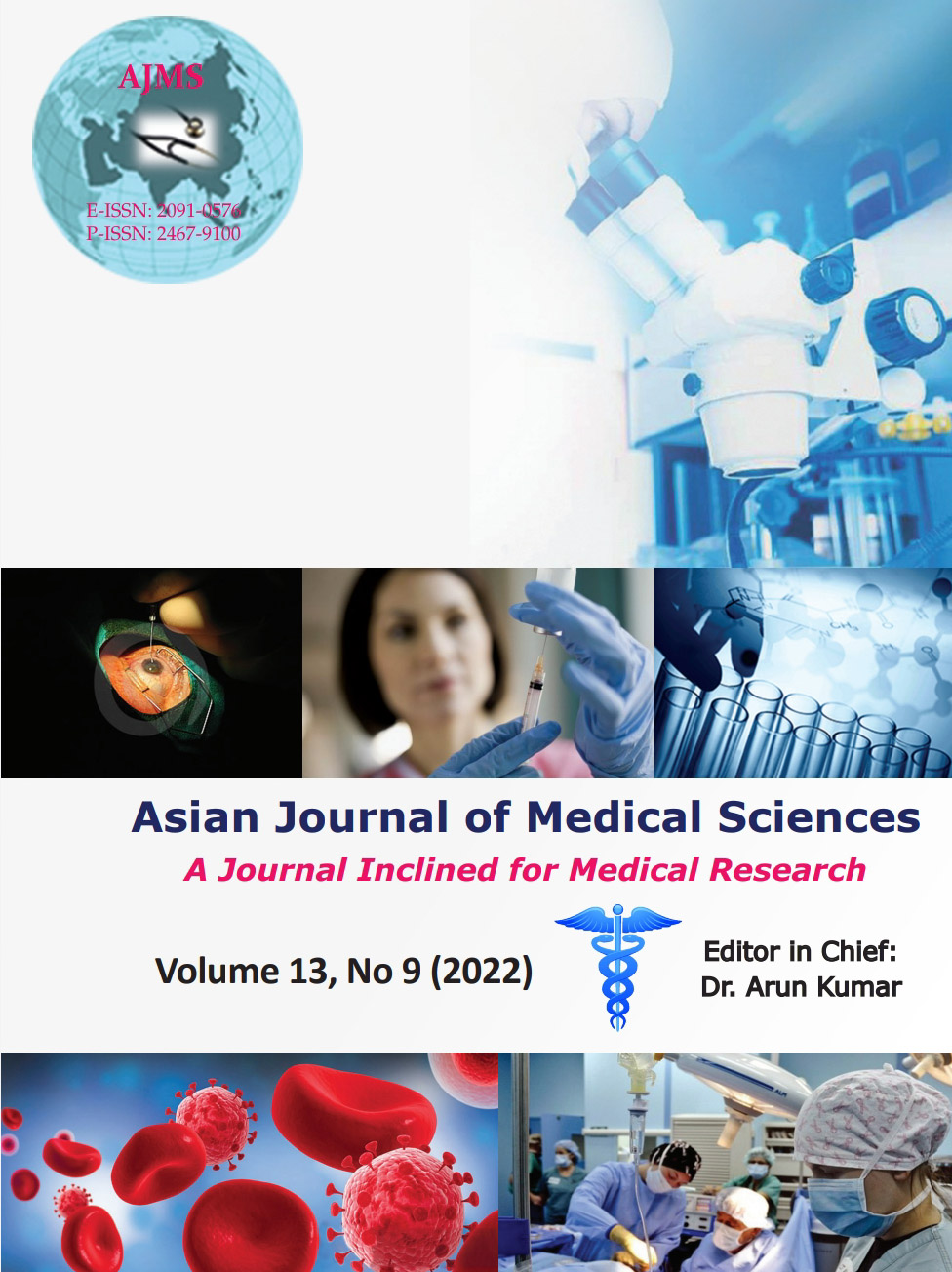To determine the relation of mean platelet volume with diabetes mellitus
Keywords:
Diabetes mellitus; Hemoglobin A1C; Mean platelet volumeAbstract
Background: Diabetes mellitus (DM) is a complex metabolic disorder portrayed by chronic hyperglycemia bringing about intricacies influencing the peripheral nerves, kidneys, eyes, and macrovascular structures. Mean platelet volume (MPV) is also considered to impact the advancement of microvascular complications of diabetes mellitus which has been looked for in this study.
Aims and Objectives: The aims of this study were as follows: (1) To study association of MPV with Nephropathy and Retinopathy in Diabetes. (2) To Study correlation of MPV with hemoglobin A1c (HbA1C), fasting blood sugar, post-prandial blood sugar, and body mass index (BMI).
Materials and Methods: This was an observational study conducted over 18 months period on patients (both males and females) seeking medical attention for newly diagnosed or previously diagnosed DM. Selective sampling technique was used and 200 diabetic patients were enrolled in the study during the study period.
Results: (1) The incidence of retinopathy and increased Hba1c was significantly higher in poorly controlled diabetics as compared to controlled diabetics. (2) In good glycemic control group, mean MPV was 8.58 fL and, in poor glycemic control group, mean MPV was 10.21 fL.
Conclusion: There was a positive correlation between MPV and HbA1C, microalbuminuria, BMI, fasting, and post-prandial blood sugar levels. There was no significant association between MPV and retinopathy.
Downloads
Downloads
Published
How to Cite
Issue
Section
License
Copyright (c) 2022 Asian Journal of Medical Sciences

This work is licensed under a Creative Commons Attribution-NonCommercial 4.0 International License.
Authors who publish with this journal agree to the following terms:
- The journal holds copyright and publishes the work under a Creative Commons CC-BY-NC license that permits use, distribution and reprduction in any medium, provided the original work is properly cited and is not used for commercial purposes. The journal should be recognised as the original publisher of this work.
- Authors are able to enter into separate, additional contractual arrangements for the non-exclusive distribution of the journal's published version of the work (e.g., post it to an institutional repository or publish it in a book), with an acknowledgement of its initial publication in this journal.
- Authors are permitted and encouraged to post their work online (e.g., in institutional repositories or on their website) prior to and during the submission process, as it can lead to productive exchanges, as well as earlier and greater citation of published work (See The Effect of Open Access).




